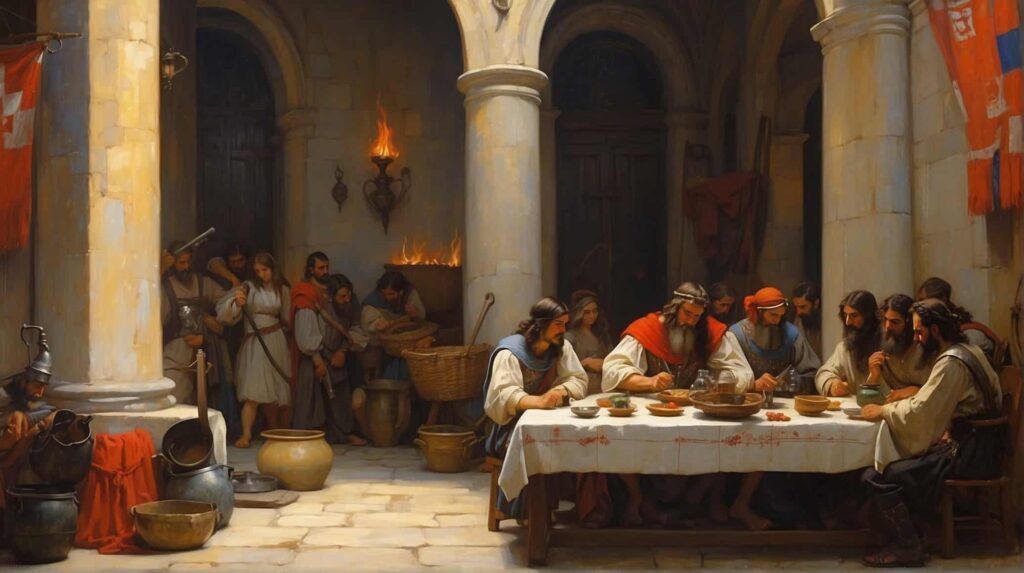Constantine Porphyrogenitus (913-959) , the Byzantine emperor, in his work De Administrando Imperio gives instructions to his successors about how and in what way they should deal with their subjects and the peoples that surround them. Among other things, the emperor gives a description of the province of Dalmatia and its inhabitants. The most numerous and the most dominant group in the Balkans during the reign of Emperor Constantine were the Slavs. The two most prominent groups were Serbs and Croats, who at that time lived next to each other. This article will deal with the emperor’s description of the Croats and the land they inhabited at the time.
The Origins of the Croats
At the very beginning of his presentation about the Croats, the emperor talks about their origin. For the Croats, he says that they are descended from the so-called White Croats. The homeland of those Croats was “on the other side of Turkey”. That is, to the area north of Hungary, which the emperor calls Turkey. In that ancestral homeland, they were neighbors with the Franks. From this we cannot determine exactly which territory is being talked about. It can be assumed that the Croats once possibly lived somewhere in the territory of today’s Czech Republic or perhaps Slovakia or even in the areas of western Ukraine. This topic is still relevant for discussion today.

Christianization of the Croats
Emperor Constantine repeatedly talks about the Christianization of Croats, as well as other Slavs. There are two stories about when Croats were Christianized. According to one story, Croats were Christianized after liberation from Frankish rule. According to another story, it happened during the time of emperor Basil I. Frankish sources say that Croats received Christianity as early as 823. It cannot be determined exactly when it happened, but it can certainly be said that during the time of Emperor Constantine there was a larger group of Croats who were Christians. As in the case with many other Slavs, probably a part of the Croats remained faithful to the old pagan religion, which disappeared over the next couple of centuries.
It was very important for Emperor Constantine to emphasize the power of Byzantium, so he necessarily liked to emphasize that the Croats, like many other peoples, were loyal and subservient to Emperor Heraclius (610-641). Nevertheless, the loyalty of Croats and other Slavs was always questionable. They adapted as they knew how, so sometimes they acted as subjects of Byzantium and sometimes as subjects of the Franks.
Croat Foreign Relations
In the Balkans, the Croats were neighbors with the Serbs, but also with the Bulgarians. There are assumptions that the Croats used to clash with the Bulgarians in the area of Slavonia. Some historians claim that the Franks used the Croats to fight for them against the Bulgarians, but all this is just speculation.
In the Christianized Croatia, the emperor mentions several cities such as Nin, Biograd, Skradin, etc. The emperor also gives figures of around 60,000 cavalry and up to 100,000 infantry, but this is definitely an exaggeration on the part of the emperor. Emperor ended his description of with the mentions of ban Pribina and weakening of Croatia.
Tomislav was succeeded by Trpimir II ( 928–935) and Krešimir I ( 935–945), who each managed to maintain their power and keep good relations with both the Byzantine Empire and the Pope. The rule of Krešimir’s son Miroslav was marked by a gradual weakening of Croatia. Miroslav ruled for 4 years when he was killed by his ban, Pribina, during an internal power struggle. Pribina secured the throne to Michael Krešimir II (949–969), who restored order throughout most of the state. Michael Krešimir II was then succeeded by his son Stephen Držislav (969–997), who established better relations with the Byzantine Empire .
According to Historia Salonitana, Držislav received royal insignia from the Byzantines, together with the title of eparch and patricius. Also, according to this work, from the time of Držislav’s reign his successors called themselves “kings of Croatia and Dalmatia”.
SUPPORT
You like our content? Consider following us on our social media platforms here for more updates on our content!
